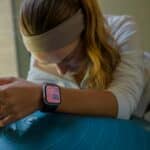Are creepy crawlers invading your child’s scalp? Fear not! Our comprehensive guide explores the most effective treatment options for tackling those pesky lice.
Understanding the Itch: What Are Lice and How Do They Spread?
Lice, those tiny wingless insects that send shivers down any parent’s spine, are a common woe among school-aged children. But what exactly are these critters, and how do they manage to find their way onto our little ones’ heads?
Lice are parasitic insects that thrive by feeding on human blood, making the scalp their primary residence. They are particularly fond of the warm, dark environment found amidst a child’s hair, where they can lay their eggs, known as nits, and multiply rapidly. Contrary to popular belief, lice infestation has nothing to do with personal hygiene or cleanliness; these pests are equal opportunity invaders, targeting both the squeaky clean and the slightly unkempt alike.
But how do they spread? Lice are notoriously skilled at hitching rides from one host to another, typically through direct head-to-head contact. This makes schools, playgrounds, and daycare centers prime breeding grounds for these unwelcome guests. Sharing hats and hairbrushes or even cuddling up during a cozy storytime session can provide lice with the perfect opportunity to jump ship and settle into a new home.
To combat the spread of lice, it’s essential to educate children about the importance of personal space and discourage activities that involve close head contact. Additionally, regularly inspecting your child’s scalp for any signs of lice or nits can help catch infestations early on, making them easier to manage.
Nixing the Nuisance: Effective Treatment Options for Lice
So, your child has come home scratching their head incessantly, and upon inspection, you discover the telltale signs of a lice infestation. What now? Don’t panic; there are several effective treatment options available to eradicate these unwelcome visitors and restore peace to your household.
One of the most popular and widely recommended treatments is over-the-counter pediculicides, which are specially formulated shampoos or lotions designed to kill lice and nits. These products typically contain ingredients such as permethrin or pyrethrin, which are insecticides that target and eliminate lice upon contact. However, it’s essential to follow the instructions carefully and repeat the treatment as necessary to ensure complete eradication.
For those who prefer a more natural approach, there are alternative remedies such as essential oils, mayonnaise, or vinegar, which are believed to suffocate or repel lice. While these methods may offer some relief, their effectiveness varies, and they may not be as reliable as conventional treatments.
In addition to treating your child’s hair, it’s crucial to tackle the problem at its source by thoroughly cleaning their environment. This includes washing bedding, clothing, and personal items such as hats and hair accessories in hot water and drying them on high heat. Cleaning a hairbrush after lice can be a meticulous yet essential task to ensure proper hygiene and prevent re-infestation.
Preventing Future Infestations: Tips for Lice-Free Living
Once you’ve successfully rid your child of lice, the last thing you want is for them to make a comeback. Fortunately, there are steps you can take to minimize the risk of future infestations and keep those creepy crawlers at bay.
First and foremost, encourage good hygiene practices, such as regular hair washing with a quality shampoo and conditioner. Keeping hair clean and well-maintained can make it less hospitable for lice to take up residence.
Teach your child to avoid sharing personal items such as hats, hairbrushes, and headphones with their peers, as these can easily transfer lice from one person to another. If your child participates in activities where close head contact is unavoidable, such as sports or dance, consider providing them with their own equipment to minimize the risk of exposure.
Finally, conduct routine head checks on your child, especially after they’ve been in situations where lice may be prevalent. Early detection is critical to preventing a full-blown infestation, so stay vigilant and nip any potential outbreaks in the bud.
While dealing with lice can be a daunting task, armed with the right knowledge and treatment options, you can effectively banish these unwanted guests from your child’s scalp and home. Remember, patience and persistence are essential, and with proper care and preventative measures, you can keep your family lice-free and itch-free for good.
Published by: Nelly Chavez








